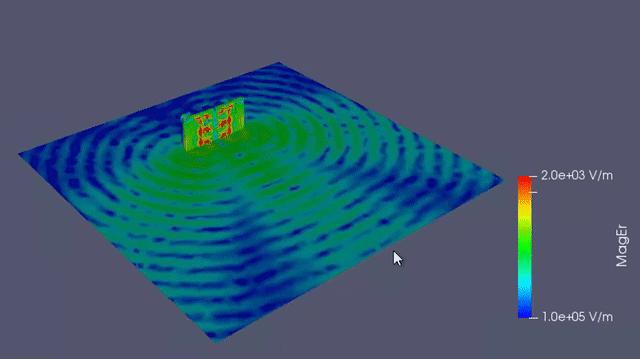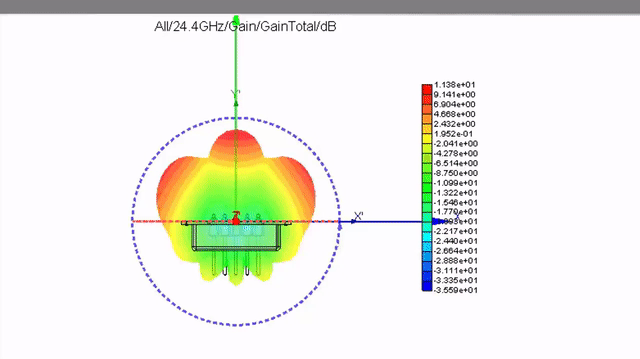Phased Array Antennas: Principles, Advantages, and Types
Key Takeaways
-
Phased array antennas are a type of antenna array that comes with the feature of electronic steering to change the direction and shape of radiated signals, without any physical movement of the antenna. The phase difference between the radiated signals from each antenna in the array is responsible for this electronic steering.
-
The fundamental principle of the phased array antenna is the phase-dependent superposition of two or more radiated signals. When the signals are in-phase, they combine together to form a signal of additive amplitude. When the signals are counter phase, they cancel each other.
-
The three types of phased array antennas are 1) linear array, 2) planar array, and 3) frequency scanning array.
Phased array antennas are gaining popularity for use in 5G communication technologies
Have you ever observed ants pulling sugar cubes? The size of the cube is considerably larger compared to the size of the ants. This act of nature proves that an army working together in the same direction can accomplish the same goal in less time.
In wireless transmissions, antenna arrays function based on the same concept—that a group working together can achieve more than a single unit doing the same amount of work. Phased antenna arrays operate on this principle to achieve improved signal strength, gain, directivity, and performance over individual antennas.

How Do Phased Array Antennas Work?
Phased array antennas include multiple emitters and are used for beamforming in high-frequency RF applications. Three common application areas are in WiFi, chirped radar, and 5G. The number of emitters in a phased array antenna can range from a few into the thousands. The goal in using a phased array antenna is to control the direction of an emitted beam by exploiting constructive interference between two or more radiated signals. This is known as “beamforming” in the antenna community.
A phased array antenna enables beamforming by adjusting the phase difference between the driving signal sent to each emitter in the array. This allows the radiation pattern to be controlled and directed to a target without requiring any physical movement of the antenna. This means that beamforming along a specific direction is an interference effect between omnidirectional emitters, e.g., dipole antennas used in WiFi.
This phased array antenna contains multiple emitters that produce a highly directional radiation pattern.
When signals emitted from each emitter in the phased array are perfectly in phase, they will interfere constructively and produce intense radiation, but this only happens along a specific direction. The direction is controlled by setting the phase shift between the signals sent to different emitters. The phase shift is controlled by placing a slight time delay between signals sent to successive emitters in the array. Outside of the main beam emission direction, the beam intensity decreases. There are also sidelobes in the beam pattern because signals are periodic, but you do get a very strong beam along a specific direction.
Comparison of a monopole antenna and a phased array antenna built from monopoles. The monopole emits in all directions in the plane perpendicular to the antenna axis. When multiple monopoles are used to form a phased array, wavefronts interfere with each other to form a flat phase front.
Advantages of Phased Array Technology
Beamforming with phased array antennas is necessary at high frequencies (approximately WiFi frequencies and higher) to overcome losses during transmission. With an appropriately sized phased array antenna, radiation from high gain emitters can be directed over a broad solid angle.
Phased array technology has helped enhance the characteristics of the collective signal or radiation pattern. Features of individual signals from the radiator and the collective signal from phased array antennas are like separated poles. The enhancement in various parameters and quantities upon arraying can be summarized as follows:
-
Power—the power of the collective signal is the summation of the individual signal powers, therefore, the strength is increased.
-
Beamforming—the shape of the beam can be controlled by the phase difference of the individual signals and the radiation pattern of the phased array antenna is narrow compared to single antennas.
-
Beam Steering—the elimination of mechanical repositioning makes the beam steering or beam positioning flexible. The beam steering is established using electronically variable phase shifters.

-
Multi-Beams—with the help of phase shifters, hundreds of beams can be synthesized in phased array antennas.
-
Digital or Mixer Option—phase shifting can be achieved either in an analog or digital way. The analog phase shifters rely on down-conversion and time-shifting of signals. The digital approach is to shift the phase of the Intermediate Frequency (IF) mixer or Local Oscillator (LO) signal.
-
Weight—the weight of phased array antennas is less than the mechanically-steered single antenna.
-
Cost—a mechanically-steered antenna can be replaced by a less expensive phased array antenna, keeping the resolution the same.
-
Reliability—the reliability of phased array antennas is much greater than single antennas. If one array antenna becomes impaired, the remaining antennas in the array will continue to function with a slight modification of the radiation pattern.
For more information on phased-array antenna design and simulation, check out this webinar.

Types of Phased Array Antennas
Phased array antennas are classified into three types based on the arrangement of individual antennas and the number of phase shifters. The classification is as follows:
-
Linear Array: The array elements are placed in a straight line with a single-phase shifter. Even though the antenna arrangement is simple, the beam steering is limited to a single plane. The vertical arrangement of several linear arrays forms the flat antenna.
-
Planar Array: For each antenna in a planar array, there is a phase shifter. The matrix arrangement of the individual antennas form the planar arrangement. The beam can be deflected in two planes. The disadvantage of planar array antennas is the large number of phase shifters required.
Planar array antenna: a) side view b) top view
-
Frequency Scanning Array: If the beam steering control is a function of the frequency of the transmitter, then phased array antennas utilizing such technology are called frequency scanning array antennas. No phase shifters are present in frequency scanning array antennas, and the beam steering is controlled by the transmitter’s frequency.
a. frequency scanning array antenna structure b) wave propagation direction
The future of 5G communication requires key technologies such as multiple accesses, multi-beams, high gain, and ultra-dense networking. Antenna designers are prepared to meet the requirements of upcoming wireless communication systems with phased array antennas.
In particular, phased array technology offering electronic steering is an asset in RF wireless communication systems. With phased array antennas, you can electronically enhance the direction, strength, and shape of the transmitted or received beams without loss of resolution.
If you’d like to keep up-to-date with our System Analysis content, sign-up for our newsletter curating resources on current trends and innovations. If you’re looking to learn more about how Cadence has the solution for you, talk to us and our team of experts.